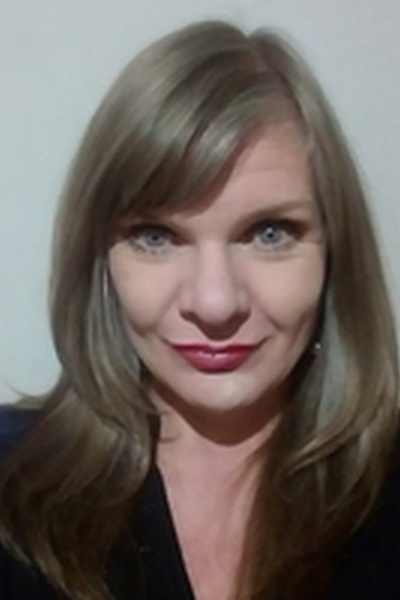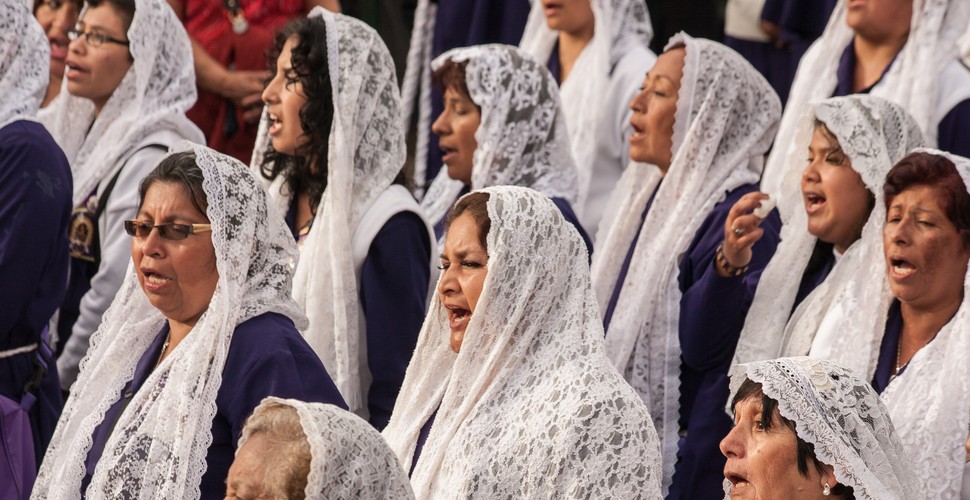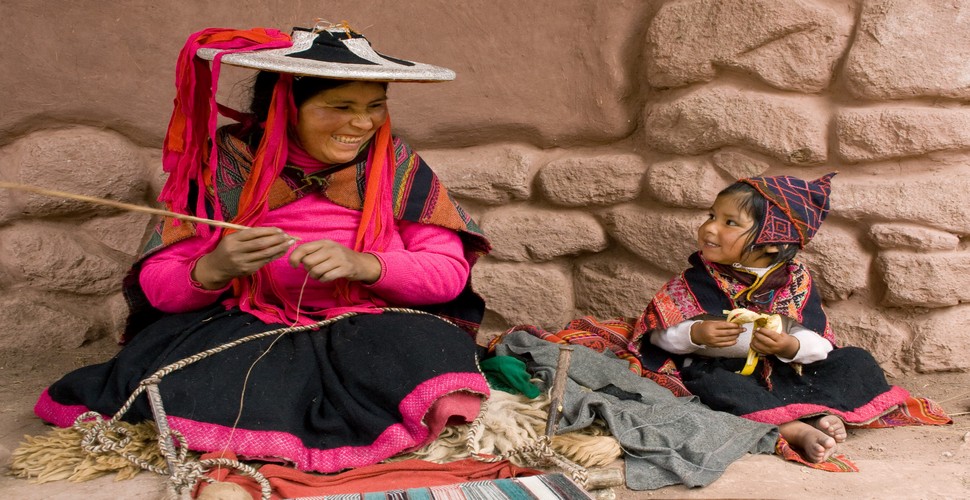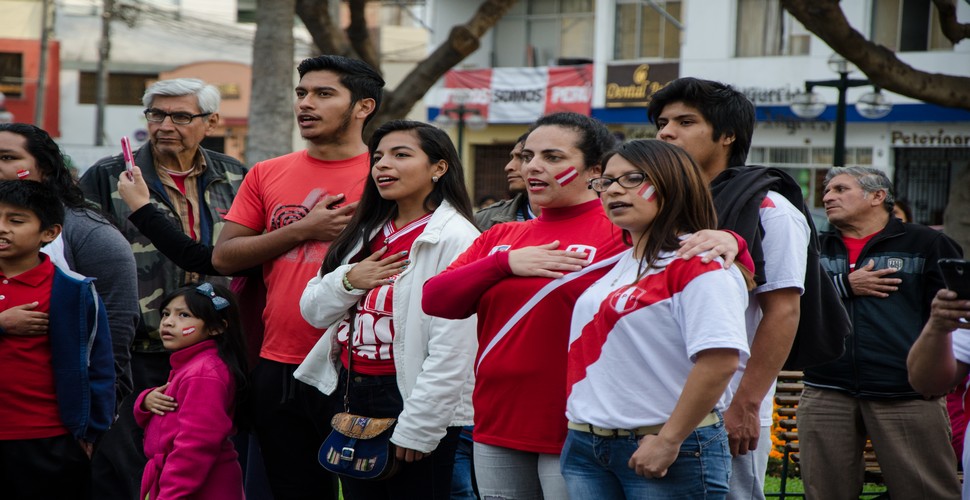

Claire Dean
Travel in South America is a joy to behold. The rich variety of destinations, experiences, landscapes and geography fascinated me so much, that I chose to relocate here, over 20 years ago! The best thing I ever did! Allow me to share my knowledge and passion for Central and South America with you and help you plan your holiday of a lifetime!

What Traditions does Peru have?
Written by:Claire Dean
Last Update: 2025-01-13
Culture in Peru is a fascinating mixture of the ancient Inca civilization, the Spanish conquistadores, and immigrants such as Chinese, Japanese, and Europeans. The main thing that binds these aspects together is the firm belief in the importance of family, religion, and Peruvian customs and traditions. Here is a breakdown of the most important traditions that Peru had in the past that continue to this day.
Santa Rosa de Lima Procession
Festivals
It is said that Peru has more than 3000 official festivals! Each region of Peru has its way of celebrating specific dates, with festivals such as The Virgen de la Candelaria, in Puno; Qollor Riti in The Ausangate region of Cusco, Inti Raymi, the sun festival, celebrated every 24th of June in Cusco, Sr de Los Temblores, the saint of earthquakes, celebrated in Cusco during holy week, El Señor de Los Milagros (The Lord of the Miracles), a catholic holiday that extends throughout all of Peru, with its origin in Lima; Santa Rosa de Lima, the patron saint born in 1956 in Lima to Spanish Colonists and was known for her piety and chastity. Santurantikuy traditional Christmas markets in the Plaza de Armas, Cusco, are just some festivals that still occur in the country.
Paucartambo
Ceremonies
Many traditional ceremonies still take place in Peru. A Pago a la Tierra is payment to Mother Earth in the Andean region, thanking her for her abundance; Flower Baths are one more mystical ritual, widely done in Cusco by locals and foreigners alike. The shamans will pray, sing, use flowery water and holy wood and incense, and be surrounded by Andean animals, so the person will experience blossoming in all areas of life, Passing a cuy (guinea pig, or an egg, all over a person's body to find out what their ailment is; Coca leaf reading, to predict one's future, depending how the coca leaves fall are some of the ancient ceremonies that people still perform today.
Coca Leaf Reading
Art and Weaving
Art and textiles have always been essential to Peru's culture, even before Inca times. Local people still spin and weave the wool of alpacas, llamas, and sheep into lovely colorful garments that they then sell to fascinated tourists. They also make beautiful blankets that have culturally important mythological symbols. But wool is not the only thing they weave-. The inhabitants of the floating islands of Titicaca Lake weave reeds to build the islands and the houses where they live. Other handmade crafts are wood carvings and jewelry, especially gold and silver. If you have been to Cusco already, you must be familiar with the "retablos"- the wooden altars from Ayacucho, which depict religious or everyday scenes, or maybe you have visited a weaving community such as Huilloc in The Sacred Valley, where the weaving techniques have been passed down through the generations for centuries, and where even today you can see the most authentic Cusco traditional clothing.
Traditional Andean Weavings
Music and Dance
As much as Peruvians enjoy food and drinks at a party, they also love music and dancing. The Peruvian tradition of Andean music is famous worldwide for the tranquil sounds of its flutes and panpipes. Before these were made, the ancient people made sounds from sea shells, reeds, and animal bones. As a result of its mixed and varied cultures, Peru has a diverse folklore with a wide variety of dances and musical styles. The Spanish influences can be seen in "charango" harps and violins, which perfectly accompany the native drums and other instruments.
Dance Group at Virgen de la Candelaria
Food
The rich and globally appreciated Peruvian cuisine is also a result of the melting pot of cultures in this area and is steeped in the Peruvian tradition. The ancient technique of Pachamanca is still used nowadays, consisting of placing meat and potatoes in a hole in the ground and covering it with hot stones. Peruvians are not afraid of experimenting with new flavors, combining different aromas after using them for thousands of years. Traditional dishes consist mainly of meat, potatoes, quinoa, alpaca, maize, and guinea pig. They have slowly fused with the European dishes brought by conquistadores and immigrants, lifting Peruvian cuisine to new heights and making it as respected and appreciated as French and Italian cuisine.
Causa rellena
Religion
If you travel to Peru, you will see that every plaza has at least one church or cathedral, if not more. Although Christianity was brought to Peru only 500 years ago by the Spaniards, the people here were already profoundly spiritual. They worshipped things like the sun, mountain peaks, and stones and made animal sacrifices, all of which the Spanish considered pagan and tried to eradicate. However, as much as they tried, they never reached specific remote communities that have retained their faith and religious practices. In any case, what is left today of religion in Peru is something called "syncretism," a mixture of the Inca beliefs and Christian values, which is a fascinating part of Inca and Peruvian tradition and culture.
Señor de los Milagros
Openness and Friendliness
From urban professionals to rural villagers, the welcoming nature of Peruvians knows no bounds. Strangers are often met with sincere smiles and open arms, making visitors feel like they are a part of the community from the moment they arrive. One of the most remarkable aspects of Peruvian culture is the emphasis placed on helping one another. This sense of solidarity and communal support is embedded in the country's history and traditions. Whether it's guiding lost tourists through the labyrinthine streets of Cusco or sharing a traditional meal with strangers, the Peruvian people are always eager to extend a helping hand.
Welcoming Locals
Regional Cultural Variations in Peru
Coastal Regions
In the cities that dot the Pacific coastline, the people of Peru reveal an energetic and vibrant spirit. Life here is influenced by the maritime history that spans generations. The coastal communities of Peru are known for their industriousness, as fishermen cast their nets into the sea, and markets overflow with the day's catch. Amid the lively markets and seaside promenades, the coastal Peruvians exhibit an urban charm that seamlessly merges tradition with modernity. Their openness and conviviality make coastal encounters a delightful experience for visitors.
Piura Fisherman
The Andean Highlands
As one ascends into the majestic Andes, the people's connection to the land deepens. In the high-altitude villages, the indigenous Quechua culture is alive and thriving. The Andean people are known for their warmth, often inviting travelers into their homes to share meals and stories. Here, the sense of community is palpable, as villages work together to tend to their terraced fields and celebrate ancient rituals. The Andean spirit encapsulates the essence of Peruvian hospitality, reflecting a harmonious coexistence with nature and each other. Travelers who venture into the Peruvian countryside will discover a way of life that is deeply connected to the land and its people. In rural areas, the warmth of the community is palpable, as families work together to cultivate the land and preserve age-old customs. The Andean villages are particularly notable for their hospitality, as visitors are often invited to partake in local ceremonies and celebrations, gaining an intimate understanding of the region's cultural tapestry.
Sacred Valley Weaver
The Amazon Rainforest
Journeying into the heart of the Amazon rainforest unveils a different facet of Peruvian society. The people of this lush and vibrant region are intricately connected to the rhythms of the jungle. Indigenous communities have adapted to their surroundings with profound wisdom, living sustainably off the land and preserving age-old traditions. Welcoming and eager to share their knowledge, these communities offer visitors a unique insight into the symbiotic relationship between humans and nature.
Amazonias
Urban Centers
The sprawling cities of Peru, like Lima, Cusco, and Arequipa, represent a convergence of cultures from across the country. In these urban melting pots, Peruvians from diverse backgrounds come together, resulting in a dynamic blend of traditions and perspectives. The city dwellers are known for their lively demeanor and an unwavering willingness to help. From guiding lost tourists through labyrinthine streets to sharing local insights, the urban Peruvians embody a fusion of modernity and tradition, creating an atmosphere of cultural exchange. A stroll through local markets showcases not only the rich variety of Peruvian produce but also the friendly interactions between vendors and customers. It's common to strike up conversations, exchange stories, and even receive recommendations from the locals on the best places to explore. This easy camaraderie between strangers fosters a sense of belonging that leaves an enduring mark on travelers. Peruvian hospitality extends beyond borders and language barriers. Visitors are met with genuine curiosity and a willingness to bridge gaps through shared experiences. The warmth of the Peruvian people creates an atmosphere where cultural exchange flourishes, leaving both locals and travelers enriched by the encounter.
Football Fans, Lima
In every region of Peru, the people's warm-heartedness is a common thread that ties the country together. From the bustling markets of the coast to the tranquil villages of the Andes and the lush depths of the rainforest, the diversity of Peru's people mirrors the diversity of its landscapes. Their generosity, sense of community, and eagerness to welcome others ensure that travelers leave Peru not just with memories of its stunning vistas, but with the lasting impression of its people's genuine hospitality. The people of Peru can be described as a treasure as precious as the country's iconic archaeological sites. Their warmth, generosity, and willingness to connect with others set the stage for unforgettable travel experiences. Whether wandering through the historic streets of Lima or embarking on a journey through the Andes, one thing is certain: the heartwarming hospitality of the Peruvian people will leave an indelible mark on your journey. Contact us here if you want to experience Peruvian customs and traditions fully during your visit to Peru.


















